Here it is, folks, WD's latest and greatest solid-state drive, the SN8100. And look, I get it, these launches, they're not exactly super exciting; it's not a new GPU dropping massive frame rates for silly prices or an exclusive shiny smooth mechanical keyboard with pre-lubed tactile switches for your fingers to feverishly itch over, but hear me out, this one just hits different. It's special and should be seriously exciting for any techie worth his salt.
Yeah, alright, new 5.0 drives are a dime a dozen these days, and the speeds involved are so vastly ahead of the rest of the PC ecosystem that it effectively makes them kind of pointless for the humble PC gamer. I get it. It's like comparing a Lamborghini Aventador to your grandma's clapped-out sedan. Alright, it can do 0-60 in less than 4 seconds, but it's still going to get you from point A to point B in about the same amount of time, thanks to that trusty old bottleneck that is highway speed limits.
Yet, every now and then, a drive comes along that radically alters the landscape. Perhaps not in a massive way, but just enough that it makes us journalists sit up and take notice. Enough to turn heads and ensure you do a double take of those figures and go, "hang on a minute". That is exactly what the SN8100 is, and Western Digital knows it. This is, quite bluntly, one of the best SSDs of 2025, and I'd wager my hat on that statement.
This thing is special; it's the company's first PCIe 5.0 SSD, and it absolutely slaps in terms of performance. It's built off the back of a proprietary controller designed internally by Sandisk (which was, until recently, under the WD umbrella but now its own company), the SMI2508. There's not a huge amount of data out there right now regarding it (I have pestered WD directly about it), but what I can tell you is that it's designed to operate with DRAM cache and comes in at a full-fat 8-channel design as standard. It's entirely unique to the SN8100 and not found on any of WD's other product lines just yet.
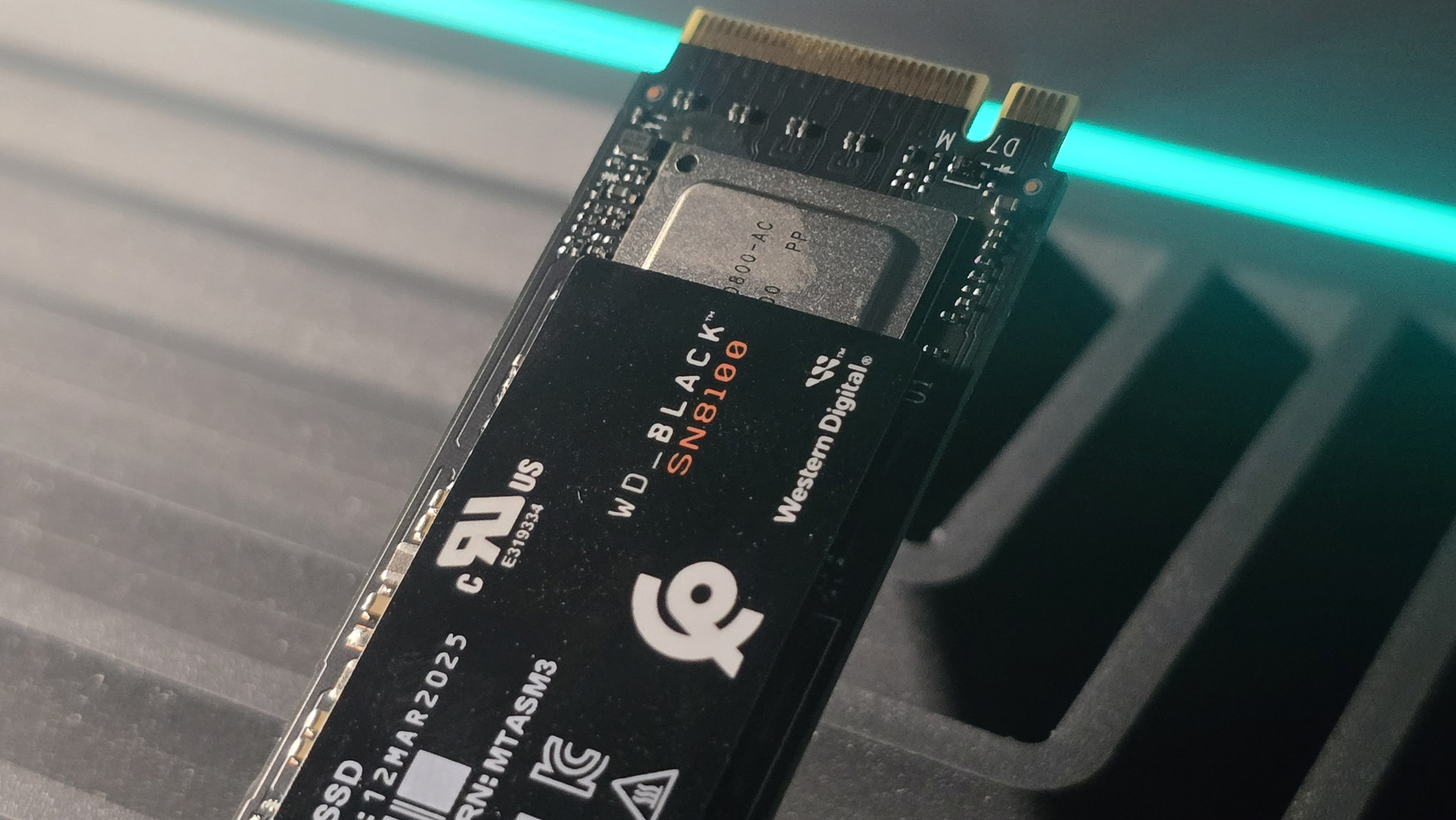
Capacity: 2 TB
Interface: PCIe 5.0 x4
Memory controller: Sandisk SMI2508
Flash memory: Sandisk 218-Layer BiCS8 TLC 3D CBA NAND
Rated performance: 14,900 MB/s sustained read, 14,000 MB/s sustained write
Endurance: 1200 TBW
Warranty: Five years
Price: $280 | £227
WD's also gone ahead and paired this with Sandisk 218-layer BiCS8 TLC 3D CBA NAND. That in and of itself is quite the radical decision. Kioxia has long been WD's NAND flash partner with the likes of the SN7100, SN850X, and more, all featuring its TLC in one form or another. This is likely to do with that de-merging of WD and SanDisk, and why there's a big SanDisk logo on the reverse of this drive. It's more SanDisk than WD, as the latter focuses on HDDs.
That NAND's then backed up with 1 GB of DRAM cache per TB of storage as well, all on a single-sided platform, making it ideal for pretty much any device that can support that 2280 form factor.
Initial launch capacities feature both 1 TB and 2 TB configurations with or without a heatsink, and they're aggressively priced too. The non-heatsink variant I've got here, at 2 TB, clocks in at a retail price of $280 in the US and £227 in the UK. Averaging out at about $0.14 per GB and £0.11 per GB, respectively. The only drives that come even mildly close to competing with that are the older first-gen 5.0 solutions, with Crucial's T700 coming to mind, or Corsair's MP700 Elite (itself a slower, more efficient 5.0 drive anyway, which kinda can't hold a candle to the SN8100).
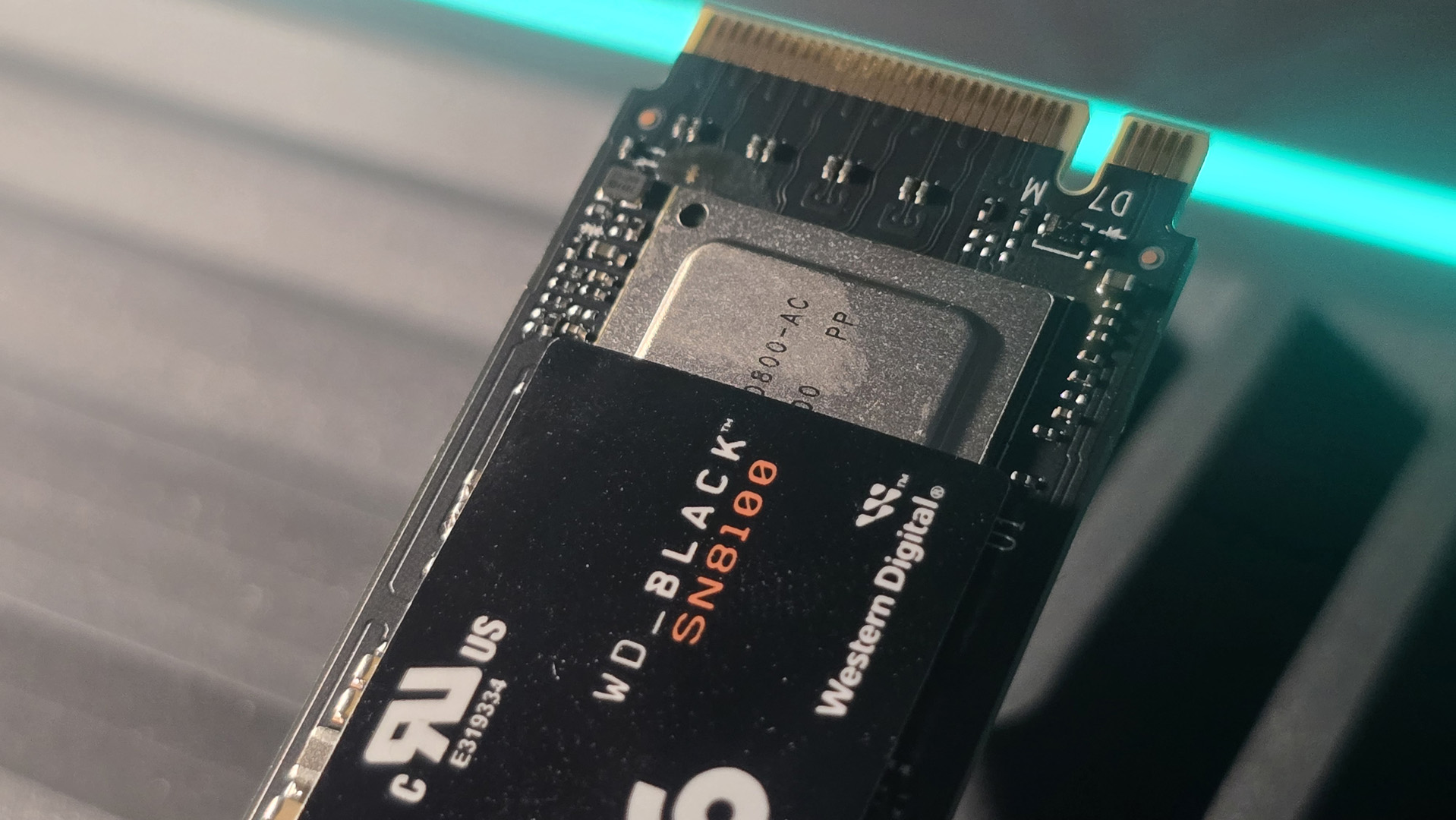
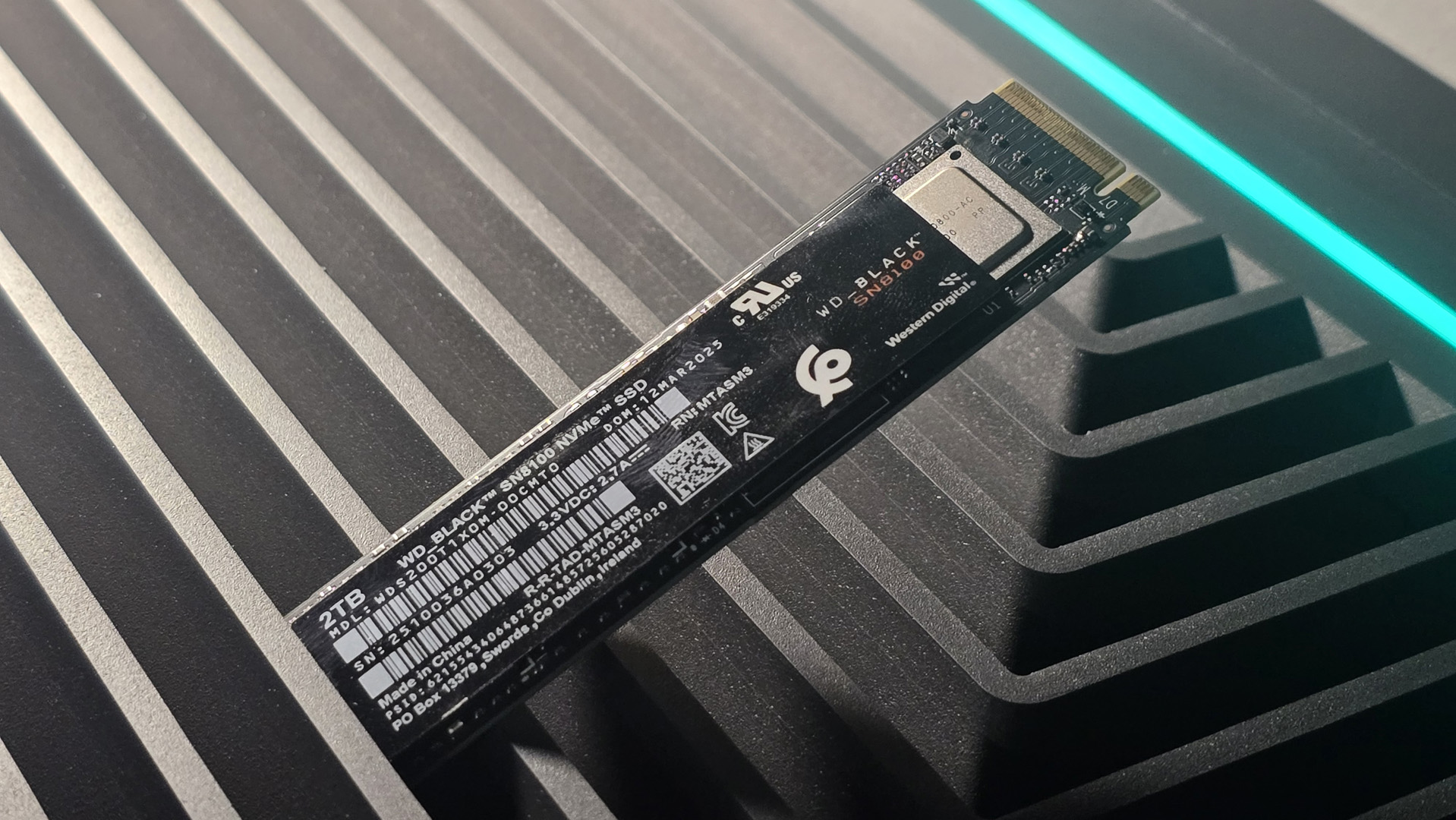
And yes don't worry, you still get the as per usual 5-year warranty and 1,200 TBW endurance rating as well, a standard affair that one these days.
So then, now that the dull stuff's out the way, let's talk performance, because it's wild.
Sequential performance in Crystal Disk Mark topped out at 14,710 MB/s on the read and 13,926 MB/s on the write. Those numbers are the quickest I've seen on any drive I've ever tested in this setup, just full stop.
Usually it's at this point I turn around and tell you, "Well, the sequentials are good, but the random 4K? Very bad", like we saw with Samsung's 9100 Pro and other drives. Nope. 119 MB/s on the read, 349 MB/s on the write, and again nothing even comes close to it. That read speed in particular is wildly fast, 31% faster than even the best drive I've tested to date. It's just monstrous.
Random 4K performance really is crucial as well, critical even for PC gamers, because it generally correlates well with how games load assets, files, scenes, textures, you name it. The higher that performance, the quicker your game will load. Probably unsurprising, then, that yet again, in Final Fantasy XIV: Shadowbringers, the SN8100 just mopped up the competition, with a total time averaging just 6.575 seconds across all five scenes. The temperatures aren't absurd either, as it managed our entire benchmarking run, topping out at just 74 degrees.
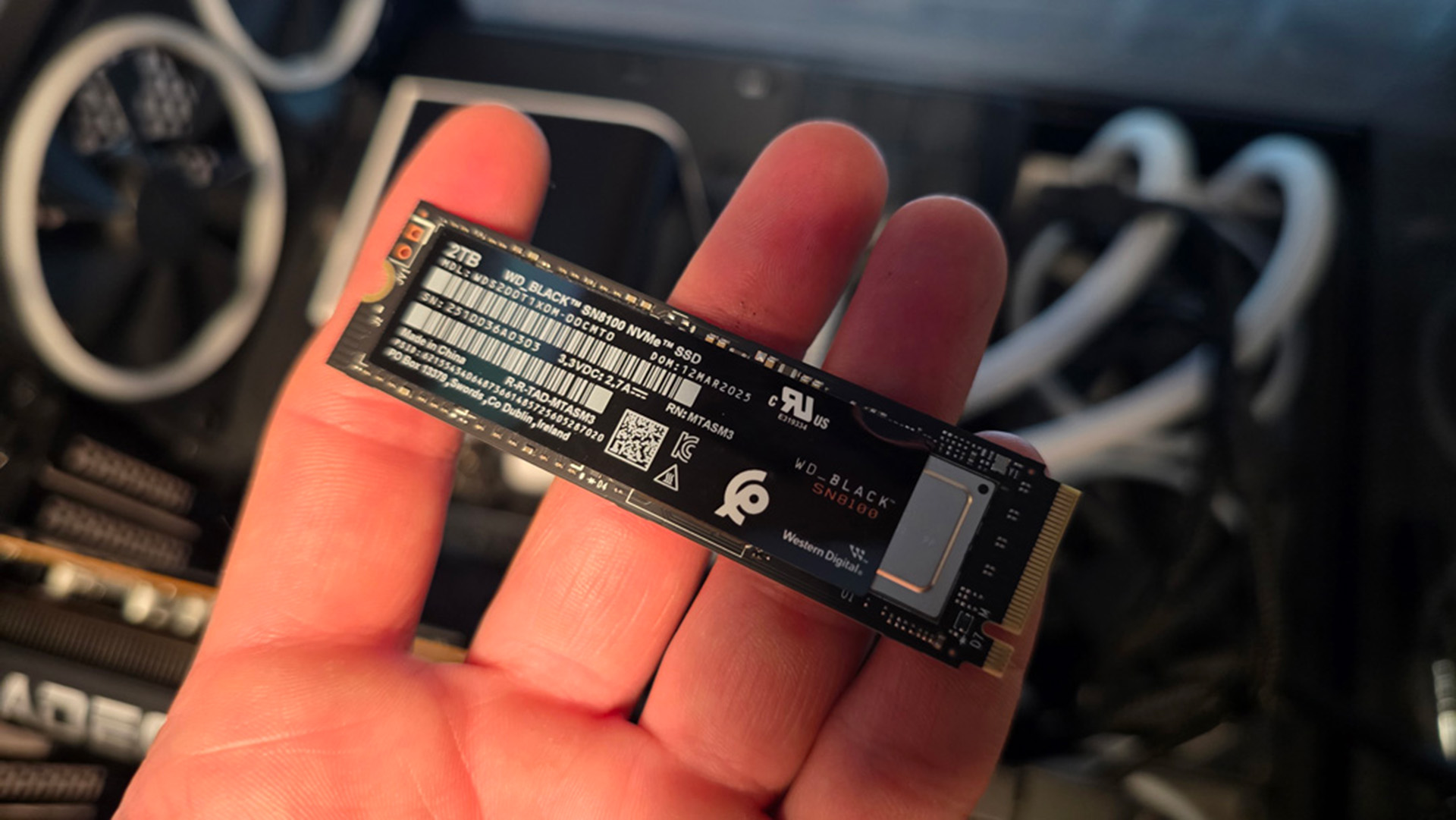
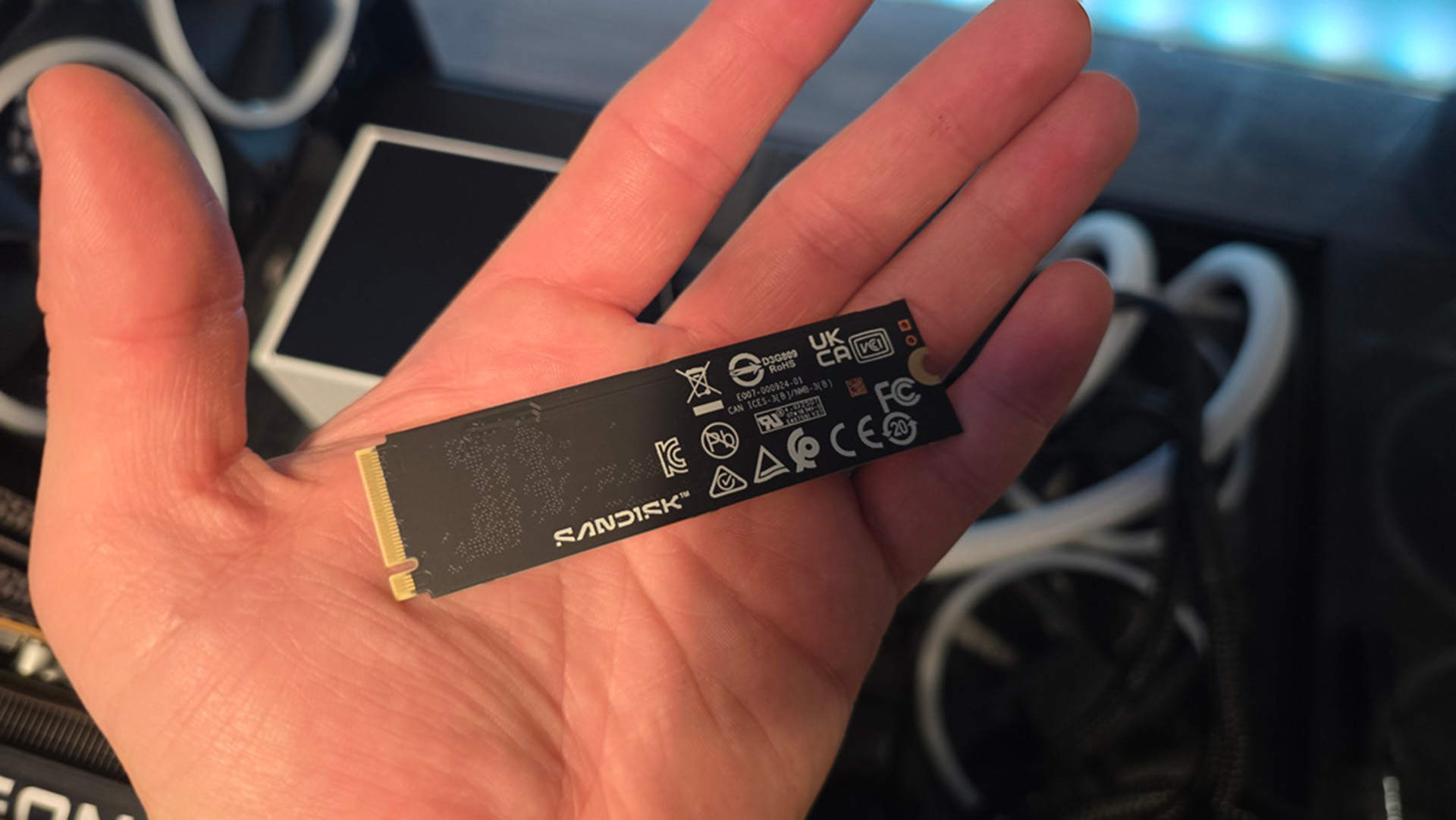
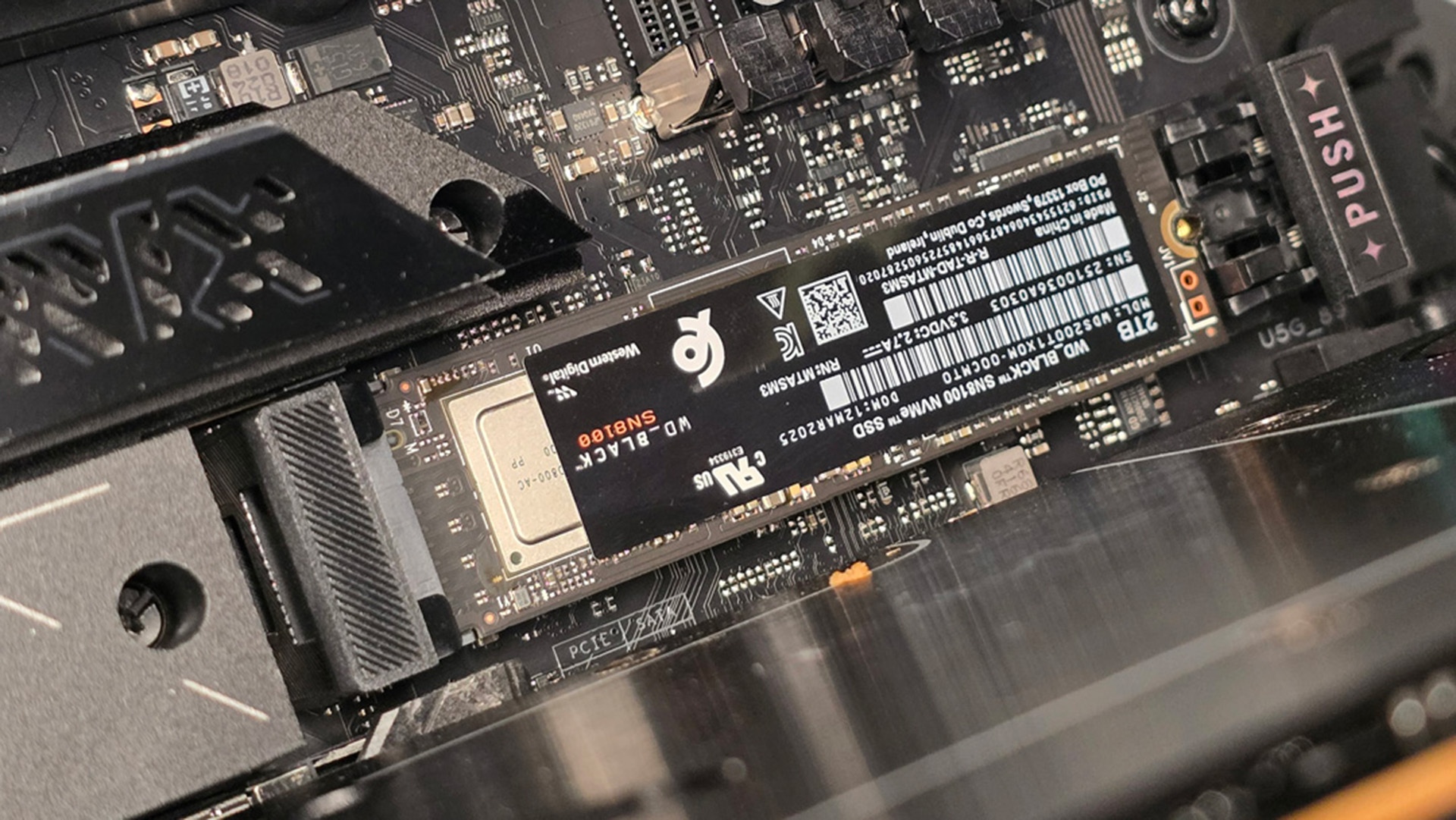
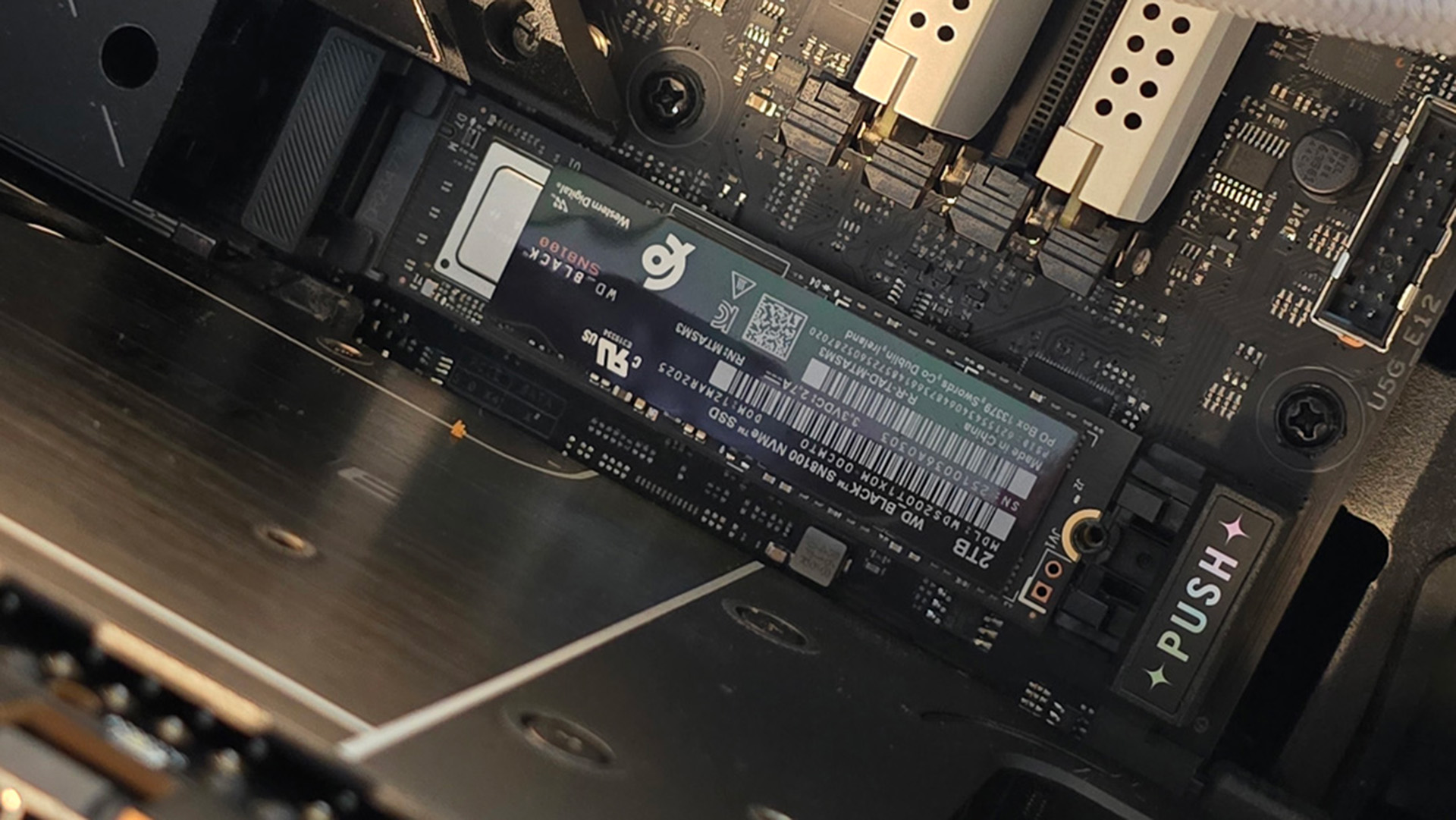
✅ You want the best of the best: With outstanding performance across the board and competitive pricing, the SN8100 is one of the best SSDs money can buy, in-game or out.
❌ You need 4 TB: At launch, capacity is limited to just 1 TB and 2 TB variants only, with 4 TB promised for later down the line.
All of its performance metrics, they just utterly annihilate everything else I've ever tested, by a huge margin. It's game-changing, and in a world of SSDs where we're continually seeing either fractional performance bumps or new drives launching but missing one key element of speed (insert poor sequentials or random 4K here), to have something like this come out and just deliver how it does is awesome.
And that's the thing, you see. We've had so many brand-new 5.0 lines launch in the last 12 months. We've had Samsung's 9100 Pro with its mediocre random 4K performance, Biwin's Black Opal X570, which absolutely chugs in load times and overpromises yet underdelivers on temperature, and Corsair's MP700 Elite, which, while impressively efficient, lacks the speeds we really want to see from flagship products in this category. What WD's done with the SN8100, by keeping everything in-house and fine-tuning it all to such a high level, is create a product that not only delivers but makes one hell of a statement as to what a true flagship product launch should be. One that this side of the PC community desperately needs.
I'd go so far as to say this is almost the perfect drive. If you want to game, if you want to render, if you want to do any professional workload, it's got your back and then some. If Phison wasn't worried about it yet, it damn well should be.



